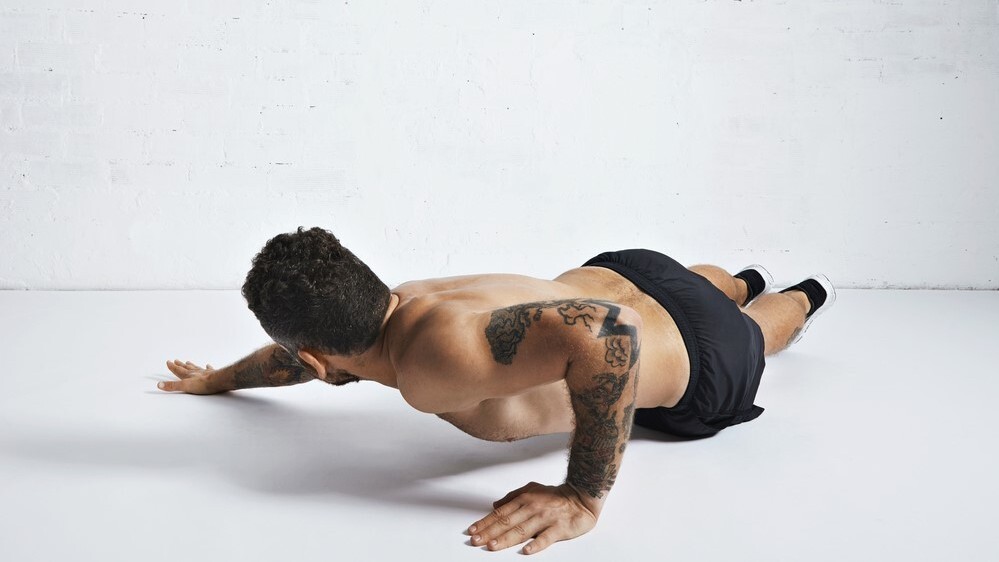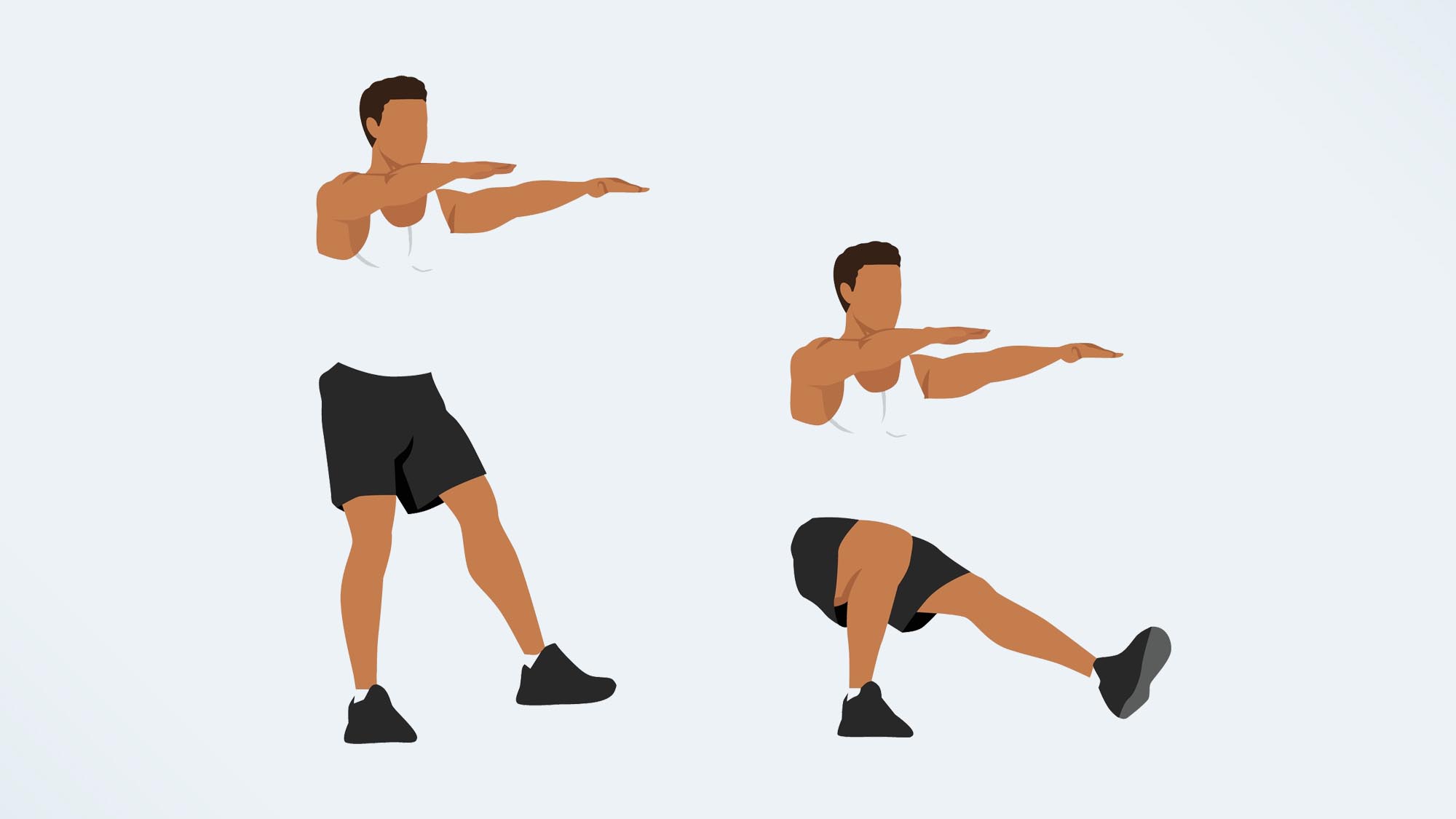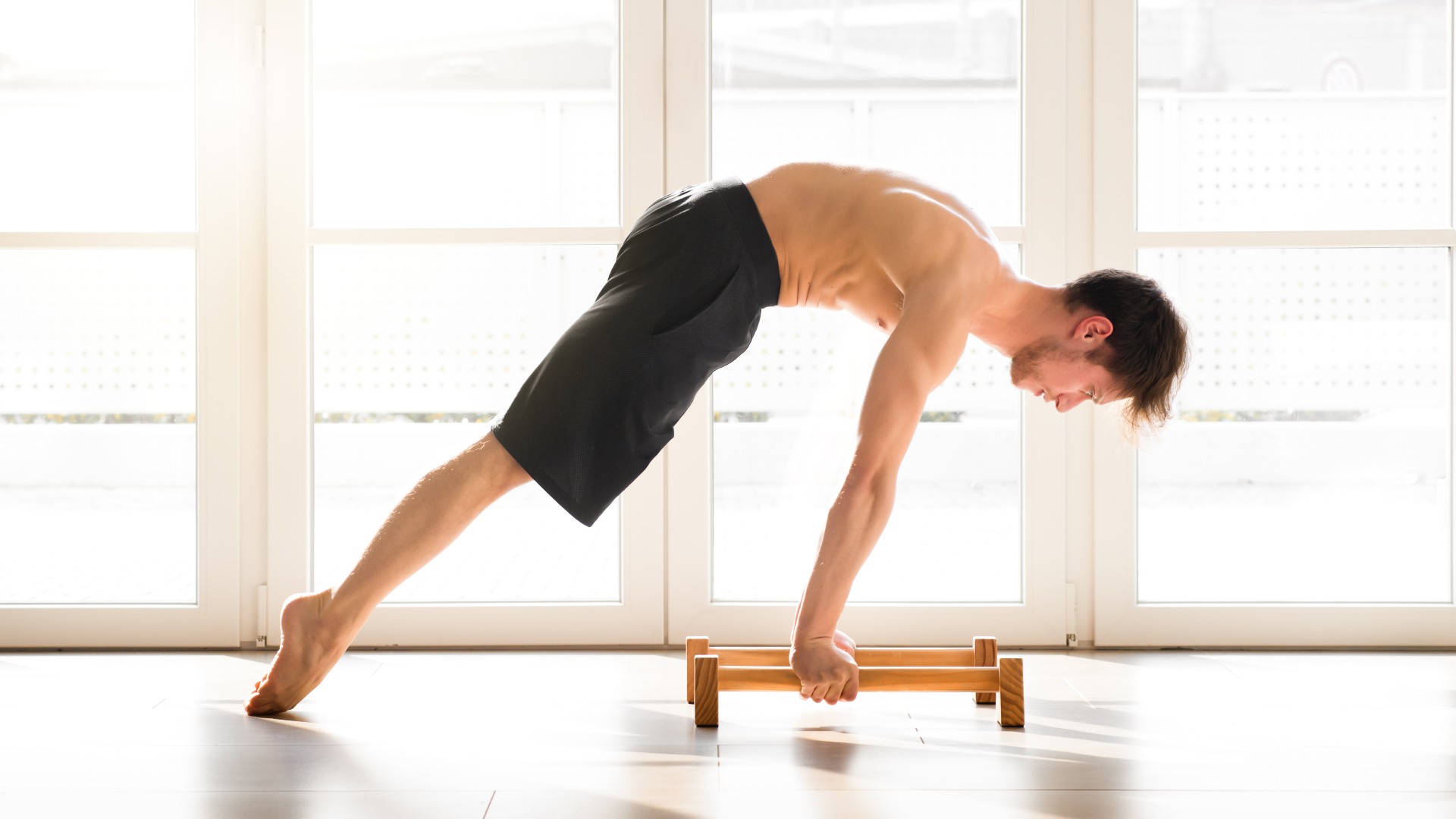
I love the feeling of lifting heavy weights, but if I had to ditch them, I would — for this three-move bodyweight workout. It takes less than 20 minutes and only requires an exercise mat, or one of the best yoga mats would work just as well.
During the short routine, you’ll target and strengthen muscles all over the body, including building a bulletproof core you can brag about. That’s if you train consistently, of course; a one-off workout isn’t going to build muscle or strength, but when repeated and progressed over time, you’ll get stronger and fitter.
I recommend giving it a try first thing in the morning to get the blood and oxygen flowing through your muscles, or use it to expel extra energy after a hard day’s work. Whichever time of day you like to exercise, one thing is for sure — your body will feel this one the next day.
What is the 3-move bodyweight workout?
The focus should be on building functional strength and intensity, so try to control each movement and its tempo. Think about the three phases of each movement: concentric, eccentric and isometric.
For example, the concentric phase of a push-up is the actual pushing up motion as you meet with the most resistance; the eccentric phase is the lowering phase of the push-up, which should be slow and controlled for this workout; the isometric phase will be the beat or pause at the bottom and top of the push-up.
Aim for quality reps over speed, and if your form goes, don’t push the reps out for the sake of it. That might mean taking extra rest or adjusting the sets or reps to suit your ability.
This routine should be performed as a circuit. Complete all exercises back-to-back, then rest for 60-90 seconds. Aim for 3-5 rounds.
1. Archer push-up

Archer push-ups are one of the best chest day variations I can think of if your push-up game is already strong. It helps you focus on one side of the body at a time, helping to strengthen your weaker side and build better balance, control and stability during push-ups.
It also requires core and shoulder stabilization to help you stay balanced when using one arm. It’s considered an advanced push-up variation, so if you don’t yet have this move in the bank, switch to standard push-ups.
To progress further, try a one-arm push-up instead. Avoid sagging hips or rotating your body to one side.
- Start in a push-up position
- Extend your right arm out to the side with the palm flat on the floor
- Slowly lower your chest towards the floor for the count of 3, keeping your body in a straight line and bending your left elbow
- Pause at the bottom of the push-up
- Explosively push back up to the starting position, engaging your core and triceps while you move and drawing your extended arm back to the starting position
- Reps: 6 per side
2. Pistol squat

Pistol squats are the ultimate test of single-leg strength, balance and mobility and core strength. If you have tight ankles, consider elevating your standing heel on a barbell plate or book. If this doesn’t feel accessible, hold on to something for balance, or learn the box pistol squat instead.
- Stand with your feet hip-width apart
- Extend one leg straight out in front of you, away from the ground
- Slowly bend your standing knee and lower into a single-leg squat for 4 seconds, keeping your chest up and your back straight
- Lower as far as you can without lifting your ankle (standing leg) away from the ground or allowing your knee to cave in
- Pause at the bottom
- Drive through your heel to explosively stand
- Reps: 6 per side
3. Planche lean

If you’re into your calisthenics workouts, you may be well-acquainted with this move already. The planche lean requires shoulder, arm, core and wrist strength and teaches the body to maintain tension — crucial for static holds like planks or tuck crunches.
- Start in a high plank position
- Rotate your hands slightly outwards and push through your hands to broaden through your shoulders
- Keep your legs straight and engage your core, then lean your body forward, shifting your weight into your shoulders past your hands. The more you lean, the harder
- Try to come on to your tiptoes and gently suck your belly button toward your spine
- Hold: 20-30 seconds
How to progress the routine
Progression comes from intensity, so if you’re cruising through this routine, chances are you need to increase the intensity. You could add sets or reps or increase the time spent in the planche hold, for example.
If you reach the end of your reps and you could easily pump out more, then add reps. Alternatively, reduce the rest between rounds or add rounds.
Another way to increase intensity is tempo or time under tension. The longer your muscles spend working, the more challenging this routine will feel. Try to slow down the eccentric phase to increase time under tension and challenge muscles even more.
Lastly, consider a variation of the same exercise. As mentioned, you could try a single-arm push-up or add weight to your pistol squat. You could also try lifting one or both legs away from the ground during the planche, or drawing your knees to your chest, which is known as a tuck planche.
More from Tom's Guide
- No, not push-ups — try the ‘steering wheel’ exercise to strengthen your upper body instead
- I teach weightlifting for a living — 3 moves build full-body muscle and crush your core in just 15 minutes
-
You don't need planks to strengthen your deep core muscles — try the 'tuck crunch' bodyweight exercise instead







